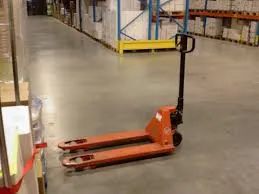


Understanding Manual Chain Hoists An Essential Tool for Lifting and Rigging
Manual chain hoists, also known as hand chain hoists, are invaluable tools used for lifting heavy objects with precision and ease. They operate through a simple mechanism that utilizes a chain to lift loads vertically, making them popular in construction, maintenance, and industrial settings. In this article, we will explore the functionality, benefits, and applications of manual chain hoists.
How Manual Chain Hoists Work
At the core of a manual chain hoist is its mechanism, which typically consists of a chain, a lift wheel, and a ratchet and pawl system. The user pulls on a hand chain, which moves the lift wheel. This motion engages the ratchet mechanism, allowing the hook to lift the load gradually as the chain is pulled. The unique design enables operators to lift significant weights with minimal effort. The load can be precisely controlled, making it easier to position objects accurately.
Manual chain hoists are designed to be portable and easy to use, requiring no external power sources. They can be mounted on beams, tripods, or other frameworks, making them versatile for various tasks. Depending on their load capacity, these hoists can lift weights ranging from a few hundred pounds to several tons.
Advantages of Manual Chain Hoists
One of the primary advantages of manual chain hoists is their simplicity. They require little maintenance, as there are no complex mechanical parts or electrical systems that can fail. This reliability makes them ideal for situations where downtime could lead to significant operational losses.
Additionally, manual chain hoists are highly versatile. They can be used in confined spaces where powered hoists may not be practical. Their portability also allows for use in different locations, whether on a construction site, in a warehouse, or even in home workshops.

Another benefit is their cost-effectiveness. Manual chain hoists are generally more affordable than their powered counterparts, making them accessible for small businesses and DIY enthusiasts alike. Their durability and lack of electrical components mean that they often have a long service life, providing excellent value for money.
Applications of Manual Chain Hoists
Manual chain hoists are used across various industries. In construction, they are essential for lifting heavy materials, such as steel beams, concrete blocks, and machinery. Their ability to lift and maneuver heavy loads helps improve efficiency on job sites.
In warehouses and shipping facilities, manual chain hoists are utilized for loading and unloading goods. They can facilitate the movement of heavy pallets and crates, ensuring that operations run smoothly. Their low-profile design allows them to be used in conjunction with other equipment, such as forklifts and pallet jacks.
Additionally, manual chain hoists are commonly found in automotive shops, where they assist in lifting engines and other heavy components for repairs. They are also widely used in theatrical productions for rigging and managing stage equipment, such as lighting and sets.
Conclusion
In summary, manual chain hoists are an essential tool for anyone who requires an efficient and reliable lifting solution. Their straightforward operation, versatility, and cost-effectiveness make them ideal for a wide array of applications, from construction sites to home workshops. Understanding how to properly use and maintain a manual chain hoist can greatly enhance safety and productivity in lifting operations. With their continued relevance in modern industries, manual chain hoists are likely to remain a staple in lifting and rigging for years to come.



